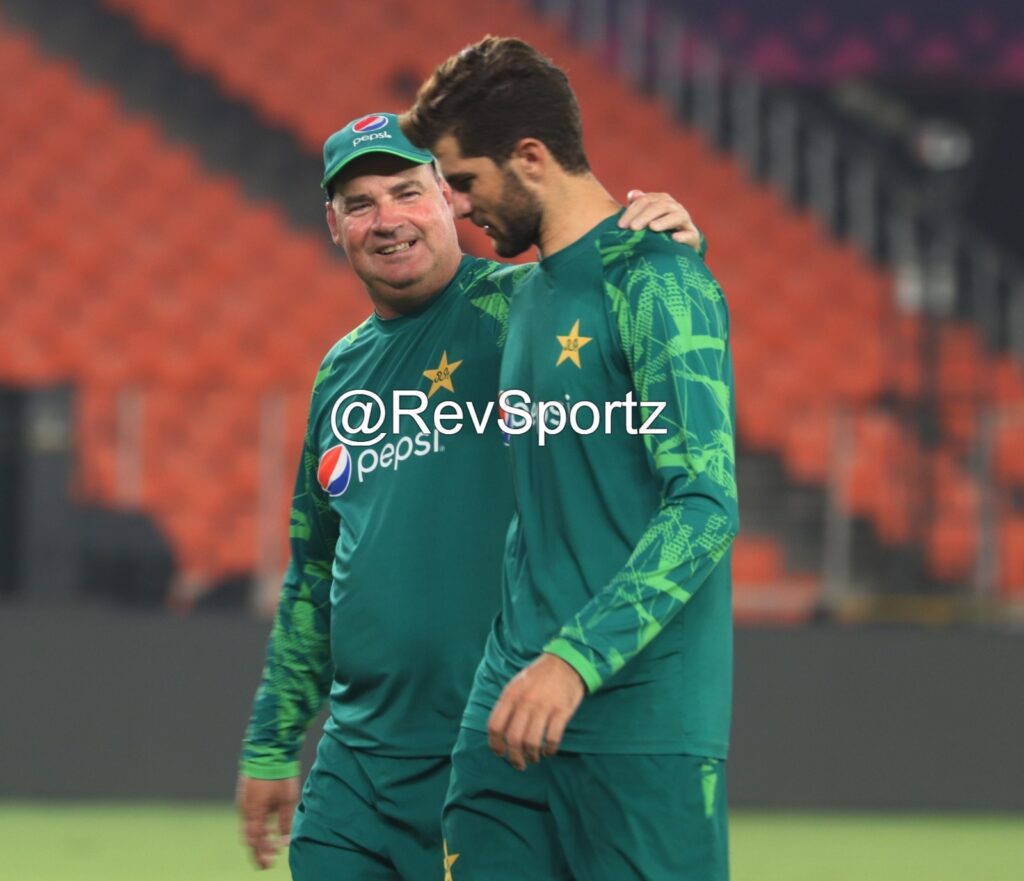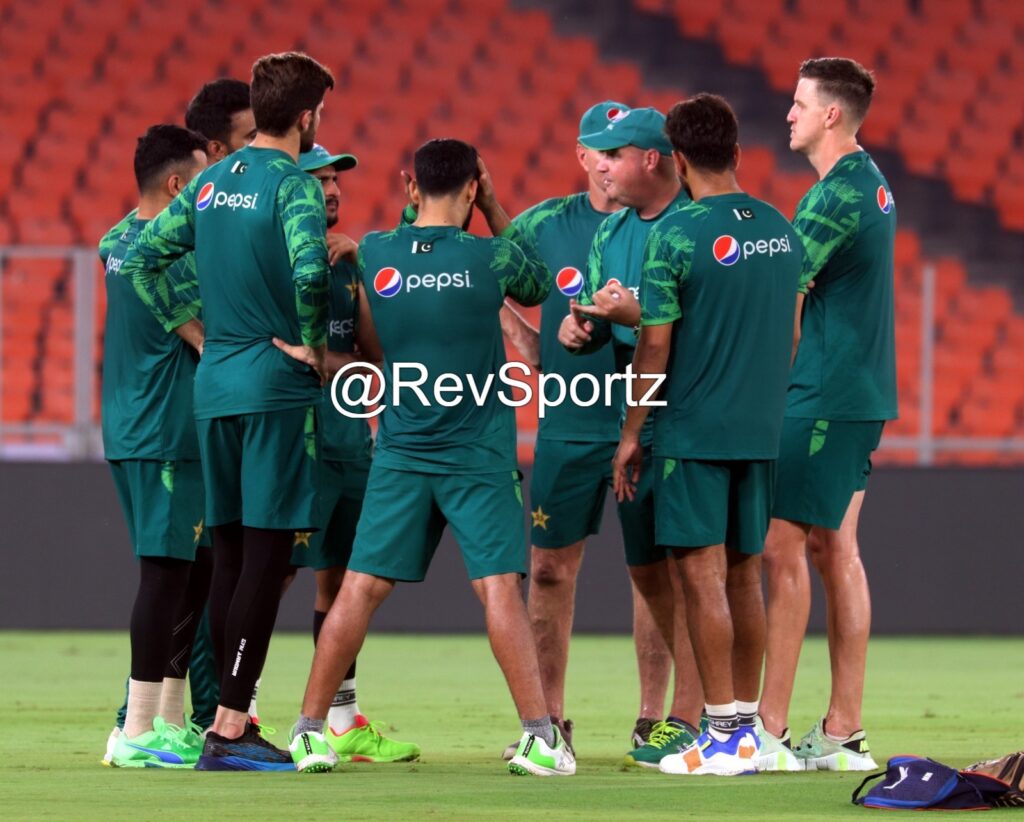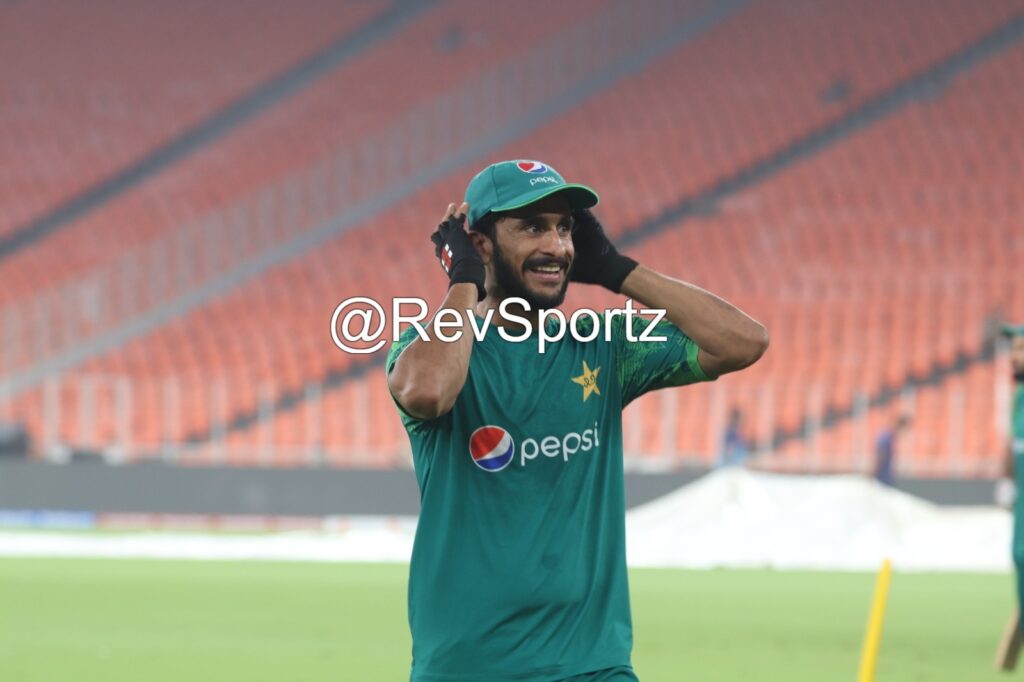
Subhayan Chakraborty at the Narendra Modi Stadium, Ahmedabad
As Shaheen Shah Afridi made his way towards the boundary rope after training, a couple of members of the media requested a selfie. In response, Shaheen quipped, “Zaroor selfie loonga, but five wicket lene ke baad [I’d be happy to take one, but only after I’ve claimed five wickets].”
As one set foot in Ahmedabad, the anticipation for the much-anticipated India-Pakistan clash was palpable. The city exuded cricket fever, with massive World Cup posters and bustling activity at every turn, reflecting the grandeur of the sport’s biggest spectacle.
The Sardar Vallabhbhai Patel International Airport welcomed travellers with colossal posters proclaiming the “biggest cricket World Cup ever.” Nearby, a giant trophy cut-out beckoned as a popular photo spot, setting the mood.

Heading towards the Narendra Modi Stadium, an Adidas stall proudly displayed the Indian jersey, and the hashtag #3KaDream hinted at the dreams and aspirations of millions of fans eagerly awaiting this encounter.
The buzz around the stadium was hard to ignore, even on a non-match day. With a substantial police presence, including the Crime Branch, patrolling every nook and corner, the security arrangements underscored the importance of the match and the duty to protect Pakistan’s team in India.
The Narendra Modi Stadium, the largest cricket ground in the world with a staggering capacity of around 134,000, is set to be packed to the rafters for the epic clash. For those playing their first match in this colossal arena, the domed structure could be awe-inspiring, especially when faced with a sea of blue-clad Indian supporters.
Pakistan, coming off a record 345-run chase against Sri Lanka and a comfortable victory over the Netherlands, seemed to be in high spirits during their practice session. The mood was jovial as the session commenced with warm-ups, but the focus soon shifted to fielding drills.
Ten players, including Babar Azam, Haris Rauf, Shadab Khan, Abdullah Shafique, Iftikhar Ahmed, and Hasan Ali, were paired up for fielding exercises. Aftab Khan, the fielding coach, supervised the session, using a mini stump as a target for players to aim at. The intensity increased with each drill, and the camaraderie among the players was evident as they cheered each other’s successful throws and motivated one another when a shy at the stump went astray. It was a clear indication that Pakistan are leaving no stone unturned in the fielding department.
After the ground fielding session, the team gathered for a huddle, where Mickey Arthur, the team director, and Aftab had a brief chat with the players. They then dispersed for additional fielding drills.
The most intriguing part of the session was the extended bowling practice with the spinners. Morne Morkel, the bowling coach, engaged Shadab Khan, Mohammed Nawaz, Iftikhar Ahmed, and Agha Salman in a session aimed at mastering a specific length. Morkel, stationed behind the stumps, closely observed the spinners. Two mini-carpets were placed at the 4-meter and 6-meter marks, with a red cone in between. The goal was to adapt their skills to challenge the in-form Indian batters effectively.
Mohammed Rizwan faced a barrage of short-pitched deliveries, including some spicy bouncers bowled by Morkel himself. Despite the challenges, the Pakistan wicketkeeper displayed his determination and intent to tackle them.
With both Pakistan and India scheduled for one last training session before the showdown that will bring normal life on the subcontinent to a standstill, the stage is set for what will undoubtedly be the most-watched contest of the tournament. And only time will tell if Afridi gets to take that selfie or not.





